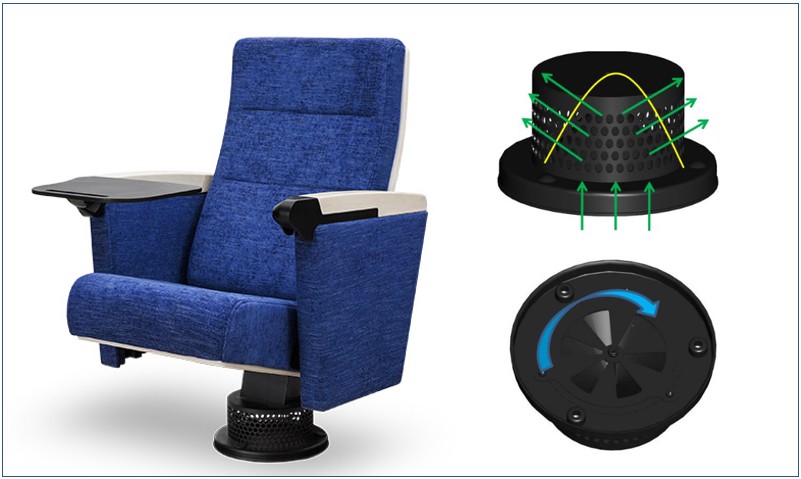Auditorium seating
No matter how big or small a venue is, seating is no doubt one of the most important part of its interior. Then, what kind of seats is the right seat for your venue and what should be considered before you decide your seating supplier and thus to provide a better seating experience for your audience? Mr. Lucas Liu, Deputy General Manager of Leadcom Seating shared his view with reporter from the Government Procurement Information.
“First of all, we should pay attention to the degree of matching of basic functional configurations when choosing the right auditorium seats. In addition to comfort, they should better serve and coordinate the application functions of the venue to help audiences or users get a better or more convenient experience.” Lucas said.
For example, cinema seats are usually equipped with functions such as reclining to increase the comfort for the users. At the same time, some additional features such as cup holders, food tray, and USB port for a complete viewing experience, while spaces like auditoriums and conference centers seats are usually equipped with writing tablets, book nets or even voting devices and simultaneous interpretation equipment etc. to suit different needs. In addition, the seat return mechanism is often required to be spring or damping mechanism so as to reduce noise during events. Seats for theaters or concert halls are usually equipped with air supply interfaces on the seat leg, the acoustic requirements of the seats are also controlled at a higher standard.
Secondly, there are also big differences between seat style for different spaces with regards to materials. For example, the stadiums and arenas normally choose hollow blow-molded plastic seats to cope with outdoor or semi-outdoor situations as it is more long-lasting, hardwearing, easier to clean but at an affordable budget. In contrast, seats for indoor spaces such as auditoriums, cinemas, churches and educational spaces are often upholstered seats as they are more comfortable and are unrestricted to weather. In addition, there are also big differences between seats for indoor uses. For example, most cinema seats have plastic seat backs and armrests because of better durability and lower cost while auditorium or theater seats have more woodwork parts for a better touching experience.
Moreover, the appearance and color of the seats should match the design style of the venue as much as possible. “Seating is the first thing we notice when we are in a venue, so choosing a seat with matching style is key. Leadcom Seating offers you a wide choice of colors and finishings of seating parts to better blend into your environment ” He said.
Three key features before procurement starts
Lucas believes that when preparing the procurement requirements for auditorium seats, the procurement unit must understand the common materials and key structures in addition to the necessary market research so that the procurement requirements can be more scientific, reasonable, complete and clear.
The commonly used materials for auditorium seats include foam, fabric or leather, woodworks, metal etc. For example, the one-piece injection-molded seat foam material should have the characteristics of adjustable foam hardness, safety, stability, fire-resistance and environmental friendliness, and compliance to national and international testing standards.
The key structures of auditorium seats include under-seat ventilation structure, seat structure and automatic return mechanism. For example, there are three ventilation structures under the seat, the cone-shaped baffle realizes uniform air supply, the diameter of 180mm-200mm guarantees the air supply, the built-in regulating valve can adjust the air volume; the seat adopts the air rod that integrates recovery power and damping and it’s long-lasting, easy to install and maintained.

In terms of the performance requirements of the entire seat, the formaldehyde emission of the entire chair should meet standards for public standards.
What should consider before seating production
What conditions should the auditorium have before choosing a seat and seating production?
- Seating layout design. Client priority is usually all about the user experience, so think about audience engagement before seating layout planner decides the overall shape of the layout. Sight lines, seat width, wheelchair space, flow of traffic, standard compliance are also key factors during layout design.
- Floor condition and parameter. Auditorium seats are generally installed and fixed on the ground, so it is necessary to clarify the thickness of the ground material and the fixed layer, to consider the matching installation method and the selection of ground explosion screws in advance.
- Site construction schedule and seat move-in time. Seating is normally the last part of move-in period. In order to reduce seat damage during construction and decoration, an accurate arrangement for material move-in is very necessary.
 EN
EN ES
ES FR
FR NL
NL DE
DE